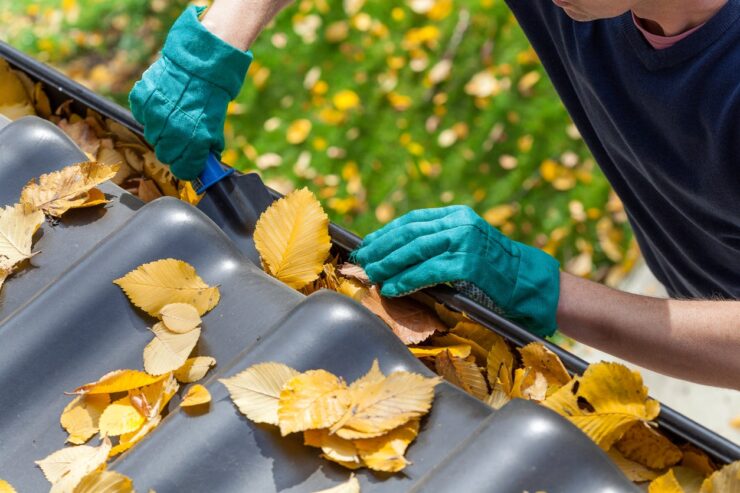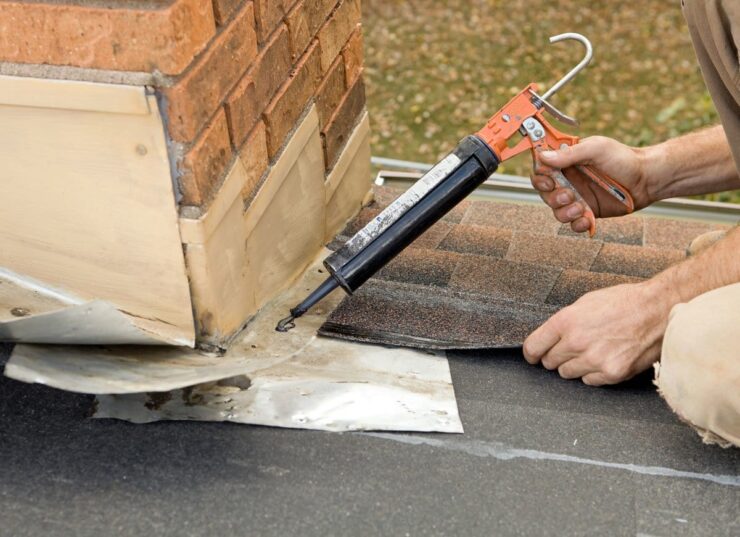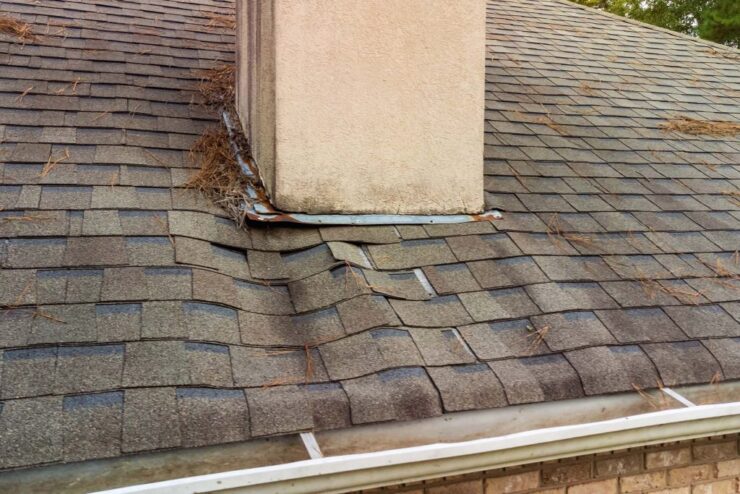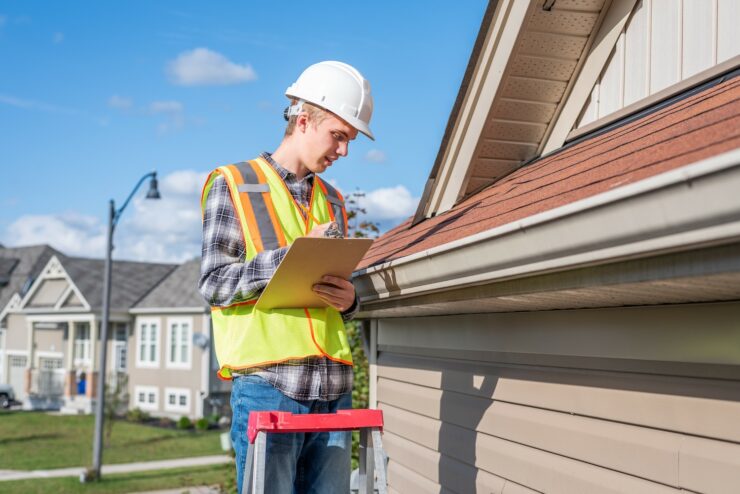A home’s defense against nature’s whims starts at its very top — the roof. Imagine it as the protective umbrella that shields everything you hold dear. A solid, weatherproof roof is more than just an aesthetic charm; it’s a necessity to prevent leaks, dampness, and the gradual decay of your home’s interior. Without regular maintenance, small issues can escalate into significant problems, potentially leading to expensive repairs or even replacements. Investing time and effort now can save you from future hassles and financial burdens.
Roof Inspection Checklist
Every component of your roof plays a pivotal role in its overall efficacy. Ignoring any can be detrimental. Here’s an extended checklist:
Shingles: These act as the frontline defense. Over time, they can become cracked, go missing, or start curling. Each missing or damaged shingle can become an entry point for water. So, routinely inspect for anomalies, and ensure uniformity and integrity across the roof.
Flashing: Flashing acts as the shield in roof transitions and vulnerable spots, such as around chimneys, vents, and skylights. Corroded, rusty, or damaged flashing can be a precursor to water infiltration. If the flashing looks compromised, it may be time to replace or reseal it.
Gutters: A gutter’s primary function is to channel water away from the foundation. However, they can get clogged with leaves, twigs, and other debris. This can cause water to spill over, potentially damaging your home’s siding or foundation. Ensure they’re not only clear but also securely fastened to prevent sagging or breakage.
Vents: Proper ventilation is crucial for maintaining the desired temperature in your home. Blocked vents can trap heat, leading to increased energy bills and reducing the lifespan of your roof. Regularly inspect them to ensure they’re free from obstructions.
Seasonal Roof Inspections
Different seasons pose distinct challenges:
Spring: After the harsh winter, it’s crucial to inspect for any damages. Spring rains can exploit any vulnerabilities, leading to leaks. Look for loose granules (from shingles) in the gutters, as these can indicate wear.
Summer: The sun’s relentless heat can warp or crack shingles. Regular inspection ensures they’re in prime condition to face the subsequent seasons.
Autumn: Falling leaves might clog gutters and downspouts. Regular cleaning can prevent water loggings, which can seep into the house.
Winter: Before the cold sets in, ensure your roof is ready to handle snow loads and potential ice dams at the edges. Checking for sufficient insulation can also help reduce heat loss.
Cleaning Gutters and Downspouts

Gutters and downspouts are the unsung heroes of roof health. They divert water away, ensuring the base and foundation of your home remain dry. However, if debris like leaves or twigs clog them, it can result in water overflow, damaging sidings and landscaping. Regular cleaning, especially during fall, is essential. Use a sturdy ladder, gloves, and a hose to clear out obstructions. For stubborn clogs, a plumber’s snake can be useful. Always ensure the downspouts direct water at least 5-10 feet away from the house’s foundation. If you’re not able to do this yourself you need to seek help from roofing Lincoln Nebraska professionals to get the job done for you.
Roofing Material Selection
The choice of roofing material plays a pivotal role in ensuring your roof’s long-term weatherproofing. Different materials exhibit varying degrees of durability, resistance, and suitability depending on the climate in which your home is situated. For instance, asphalt shingles are a popular choice due to their affordability and general durability. However, if you reside in regions characterized by extreme heat or cold, it’s worth considering alternatives like slate or clay tiles. These materials offer excellent insulation properties and are better equipped to handle temperature fluctuations without compromising their structural integrity. To make an informed decision, conduct thorough research to identify the best roofing material for your specific geographical area, taking into account factors such as longevity, maintenance requirements, and insulation capabilities.
Regular Shingle Maintenance
Regardless of the roofing material you’ve chosen, all types of shingles demand regular attention and maintenance to withstand the relentless assault of environmental stressors. Over time, exposure to elements can take a toll on your roof’s shingles. For asphalt shingles, keep a vigilant eye out for signs of deterioration, such as granule loss, curling, or buckling. Wooden shingles, on the other hand, may be susceptible to splitting or mold growth. To ensure your roof’s continued weatherproofing, it’s imperative to address any shingle damage promptly. For minor issues, a reliable roofing sealant can often serve as a quick and effective solution to patch up the problem and prevent further damage. However, in cases of extensive shingle damage, it’s advisable to seek professional intervention to ensure the long-term integrity of your roofing system.
Flashing and Sealant Inspection

The joints and valleys of your roof, where different sections meet, are especially vulnerable to water seepage. This is where flashing comes in, providing an additional layer of protection. However, over time, flashing can corrode or detach. Regular inspection can catch such issues early on. Any gaps can be sealed using a high-quality roofing sealant. Ensure the sealant hasn’t cracked or peeled, which can compromise the roof’s integrity.
Ventilation and Insulation
A well-ventilated and insulated attic prolongs your roof’s lifespan. Proper ventilation ensures that heat and moisture don’t accumulate, which can warp the wood and cause shingles to deteriorate. Simultaneously, insulation keeps your home energy-efficient, reducing heating costs in winter and cooling costs in summer. Check vents for blockages and insulation for dampness or damage.
Professional Roof Inspections
No matter how thorough, DIY inspections have their limits. Hiring a professional roofer for an annual check can provide an expert perspective. They can spot potential issues, offer solutions, and ensure that your roof remains in optimal condition. It’s a small investment towards a prolonged roof life.
Storm Damage Prevention

Storms are one of the major culprits behind roof damage. Before storm season, ensure your roof is in prime condition. Secure loose shingles, clear gutters, and trim overhanging tree branches. After a storm, a quick inspection can help identify and rectify damages, preventing long-term issues.
DIY Roof Repairs
Minor roof issues don’t always need professional intervention. With the right tools and safety precautions, DIY repairs are feasible. However, always prioritize safety. Use a sturdy ladder, wear non-slip shoes, and avoid working during adverse weather conditions. For significant damages, though, professional expertise is recommended.
Conclusion
Your roof is an indispensable shield, protecting your cherished abode from nature’s furies. Regular maintenance and vigilance are the keys to a long-lasting, leak-free roof. Don’t procrastinate; your home’s health and safety depend on it. Whether it’s a DIY check or hiring a professional, ensure your roof gets the attention it rightly deserves.


